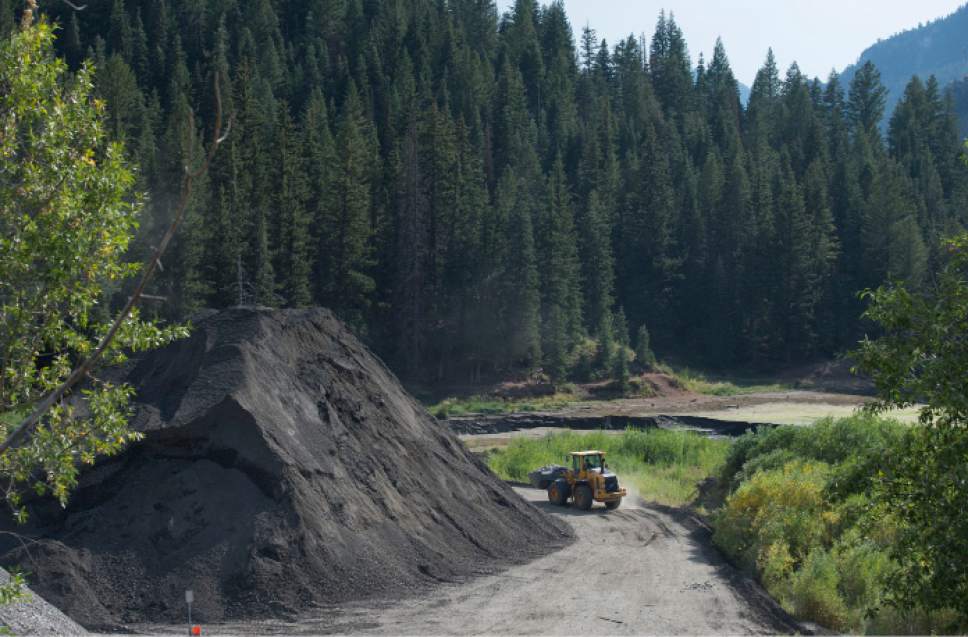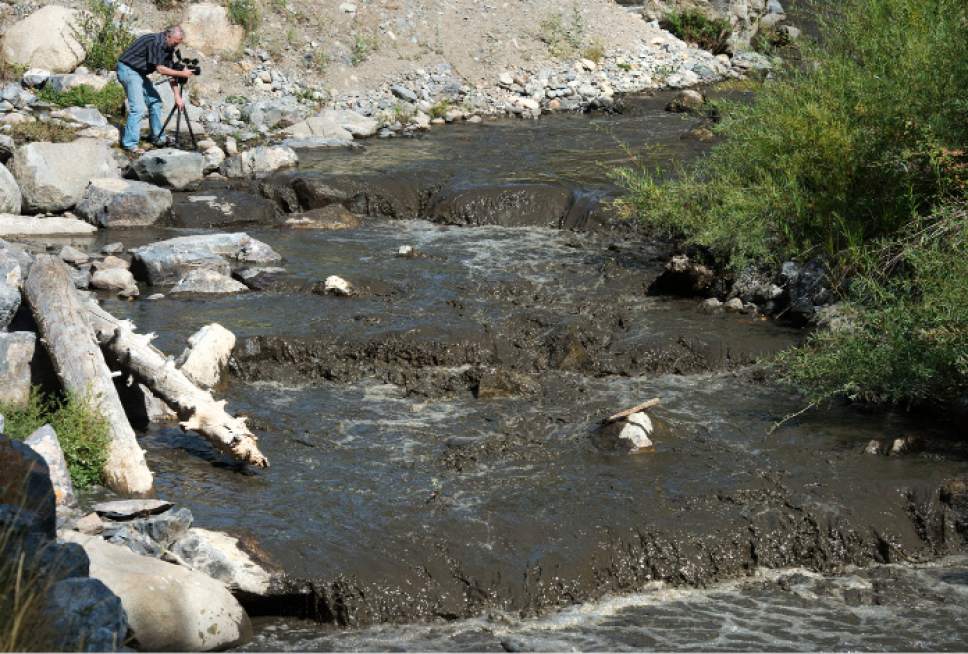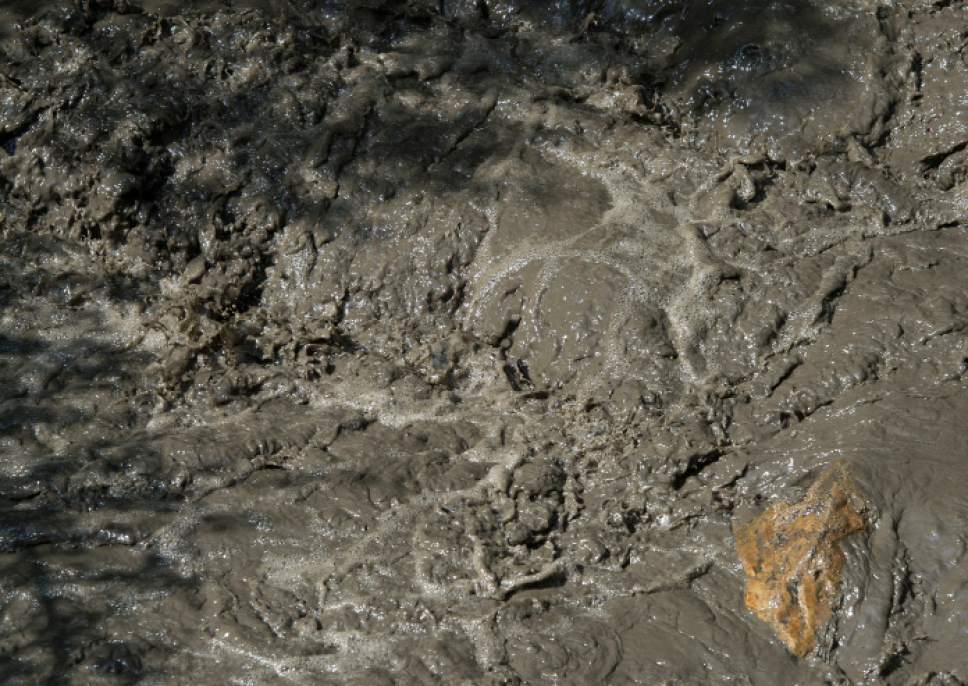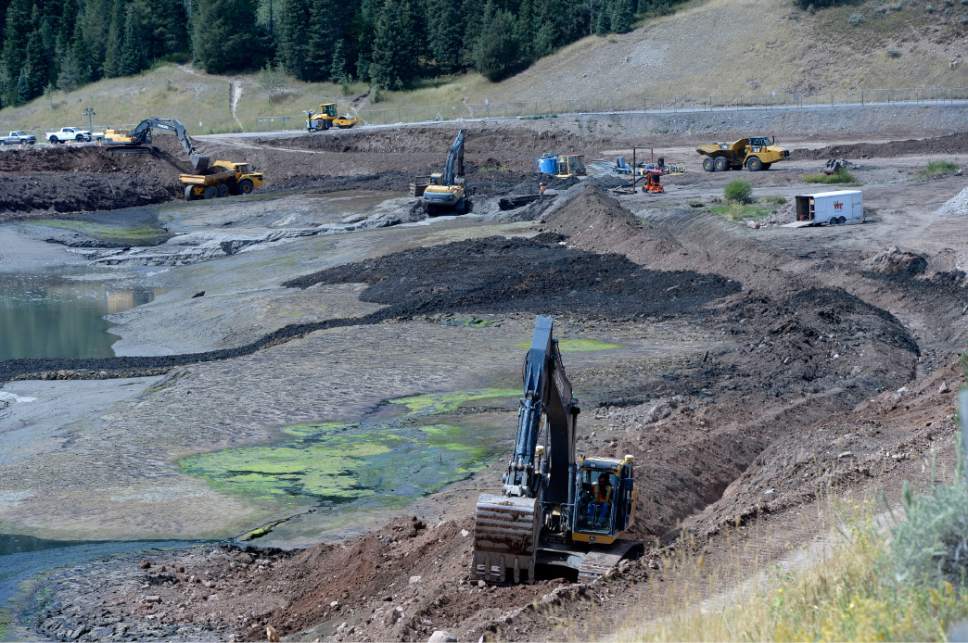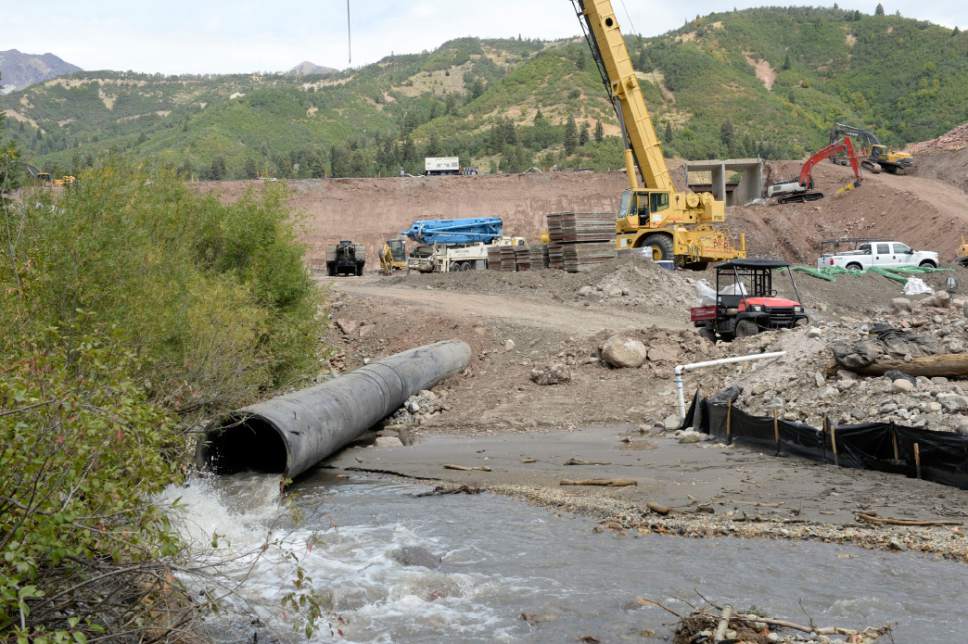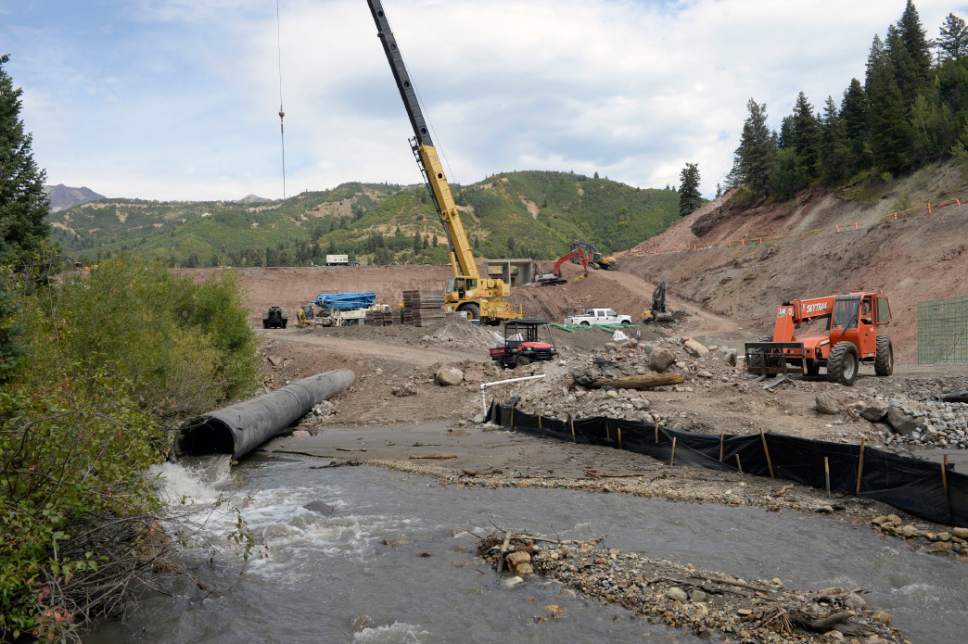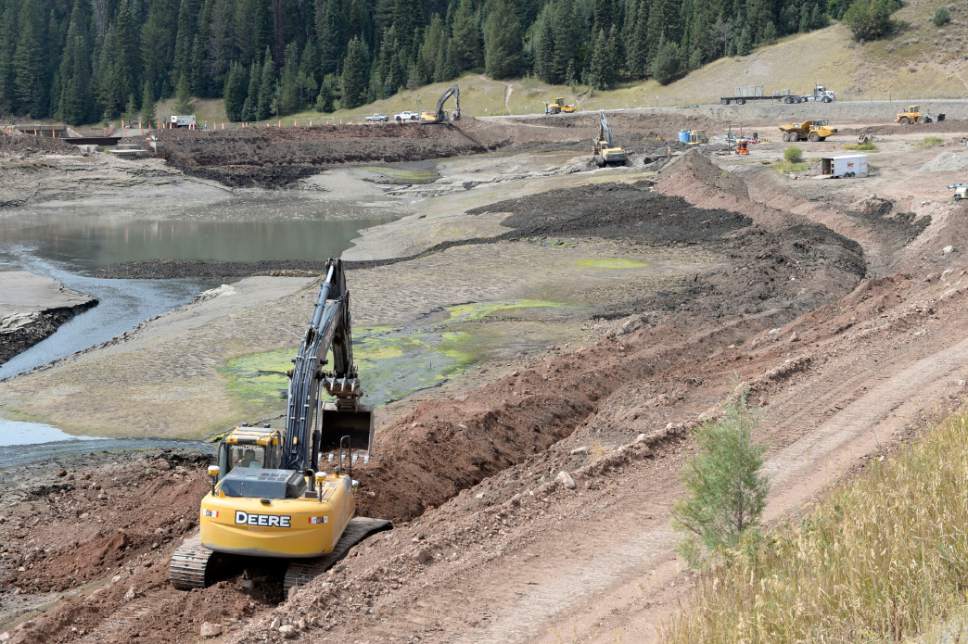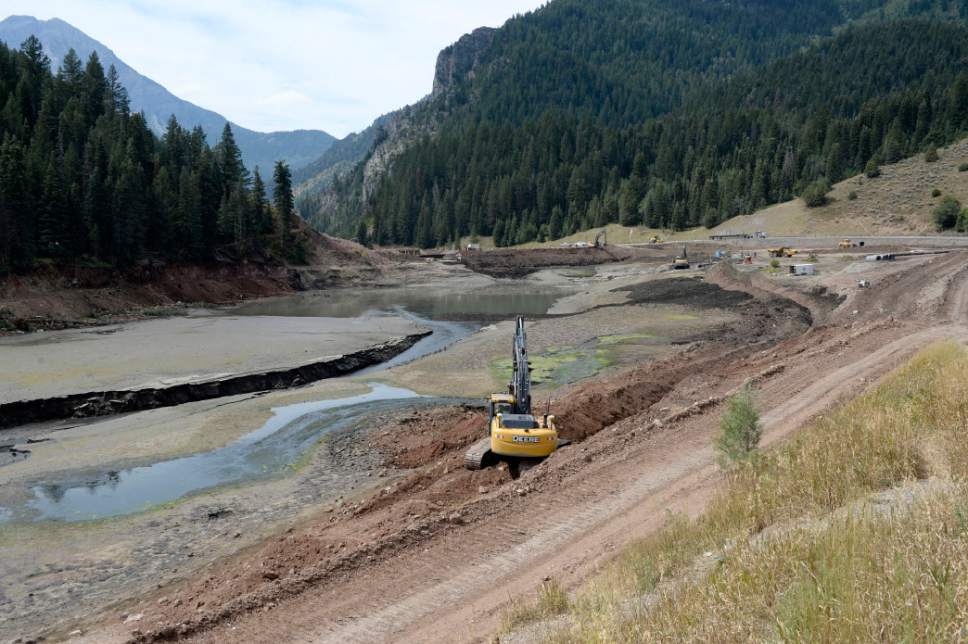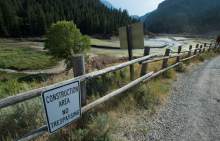This is an archived article that was published on sltrib.com in 2016, and information in the article may be outdated. It is provided only for personal research purposes and may not be reprinted.
Northern Utah County water officials failed to formally inform the state of a discharge of metals-laced sediment from Tibble Fork Reservoir, according to the Division of Water Quality.
The North Utah County Water Conservancy District, Tibble Fork Reservoir's owner and operator, faces six citations in the state's violation notice, which was released Wednesday. Included among those citations is a charge that the district never notified the state of last month's incident, and an order to supply the Utah Division of Water Quality (DWQ) with a formal report detailing the spill.
Representatives of the North Utah County Water Conservancy District said they could not comment on the notice of violation Wednesday afternoon. A lawyer representing the district was out of the office, and water district leadership said it had not yet reviewed the notice.
According to the violation notice, the North Utah County Water Conservancy District released water from Tibble Fork Reservoir on Aug. 19 to facilitate construction at the dam. As the water level dropped, deposits at the bottom of the reservoir eroded, sending an estimated 8,700 cubic yards of sediment into American Fork River.
A third party discovered the release two days later.
Kim Shelley, surface water section manager for the DWQ, said this third-party witness brought the spill to the division's attention. Other entities, including the National Park Service at Timpanogos Cave National Monument and the United States Forest Service, also notified the DWQ. The water district, Shelley said, never formally notified the agency of the incident, though state statute requires that the responsible party notify the state of a spill within 24 hours.
According to the violation notice, samples collected before construction began indicated that the sediment at the bottom of Tibble Fork Reservoir was contaminated with arsenic and lead from historic mines upstream.
According to samples collected by the Timpanogos Cave park service, water samples collected from American Fork River on Aug. 22 contained 7,680 milligrams of suspended solids per liter of water, as well as arsenic, lead, mercury and zinc. Samples collected by park service employees from the same location on Aug. 8 contained 3.6 milligrams of suspended solids per liter of water and no detectable concentrations of arsenic, lead, mercury or zinc.
The Utah Division of Wildlife Resources also found that a 2-mile stretch of American Fork River below Tibble Fork Reservoir was devoid of live fish on Aug. 23. The agency estimated that about 5,250 rainbow and brown trout were killed.
Ultimately, Shelley said, water monitoring did not detect concentrations of heavy metals that exceeded state water quality standards for human health. The allegations associated with the Tibble Fork incident pertain to the water conservancy district's failure to report, to the loss of wildlife and to the increase of suspended sediment in the river.
"The river doesn't normally look like chocolate milk," Shelley said, "and in this case, it did, due to the sediment, so that's a violation."
Shelley said the DWQ is negotiating a stipulated compliance order with Rocky Mountain Power regarding an earlier incident that led to the release of an estimated 2,700 cubic yards of coal ash into the Price River. Rocky Mountain Power has cooperated, Shelley said, and provided all the necessary information ahead of time, negating the need for a notice of violation. She said the terms of the stipulated order would be released once the state receives a formal response regarding the DWQ's draft settlement from the utility company.
Twitter: @EmaPen


